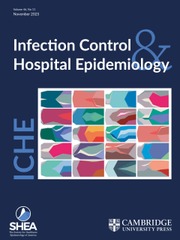Crossref Citations
This article has been cited by the following publications. This list is generated based on data provided by Crossref.
McCormick, Rita D.
Meisch, Mary G.
Ircink, Fran G.
and
Maki, Dennis G.
1991.
Epidemiology of hospital sharps injuries: A 14-year prospective study in the pre-AIDS and AIDS eras.
The American Journal of Medicine,
Vol. 91,
Issue. 3,
p.
S301.
Brevidelli, Maria Meimei
Assayag, Ruth E.
and
Turcato Jr., Gilberto
1995.
Adesão às precauções universais: uma análise do comportamento de equipe de enfermagem.
Revista Brasileira de Enfermagem,
Vol. 48,
Issue. 3,
p.
218.
Zafar, Abdul B.
Butler, R. Christopher
Podgorny, Judith M.
Mennonna, Patricia A.
Gaydos, Larry A.
and
Sandiford, John A.
1997.
Effect of a Comprehensive Program to Reduce Needlestick Injuries.
Infection Control & Hospital Epidemiology,
Vol. 18,
Issue. 10,
p.
712.
Burke, Michael J.
Sarpy, Sue Ann
Smith-Crowe, Kristin
Chan-Serafin, Suzanne
Salvador, Rommel O.
and
Islam, Gazi
2006.
Relative Effectiveness of Worker Safety and Health Training Methods.
American Journal of Public Health,
Vol. 96,
Issue. 2,
p.
315.

